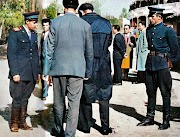Analysis of the League of Lezhë in the Albanian Resistance to the Ottomans
Albanian Chronicles Diary
2 March 1444
Historical Context and Background of the Resistance
At the beginning of the 15th century, Albania was at a crucial historical crossroads, caught in the grip of the Ottoman Empire's inexorable advance. It was an era dense with conflict, in which the entire social fabric was imbued with a palpable uncertainty, a period in which the figure of George Kastrioti, universally known as Skënderbeu, emerged powerfully. This distinguished Albanian nobleman, whose destiny seemed ineluctably intertwined with the very essence of national resistance, would leave an indelible mark on the history of his country. Endowed with exceptional leadership skills and a clear and penetrating strategic vision, Skënderbeu became the fulcrum around which the formation of the League of Lezhë would be articulated in 1444. This alliance, forged with meticulous care among the Albanian princes, aimed to consolidate a common front of resistance, orchestrating a united and organised opposition against Ottoman expansionist ambitions. His leadership, characterised by iron determination and unparalleled strategic wisdom, was instrumental in rallying the diverse Albanian forces under a single banner, marking the beginning of a new era of organised resistance that would instil courage and inspiration for decades to come.
The Formation of the League of Lezhë
The formation of the League of Lezhë, which took place in the city of the same name, also known as Alexis, represented a crucial episode in the historical fabric of Albania. The 2nd of March 1444 was a date of historical significance, when nobles and princes from all corners of the country gathered, led by Skënderbeu, with a common goal: to join forces in a solid coalition to oppose the oppressive advance of the Ottoman Empire. This historic assembly was attended by eminent figures of the Albanian aristocracy, including representatives of such prestigious lineages as the Arianites, the Balsha, the Muzaka, the Spani, the Zaharia and the Thopia. The event, permeated by an unprecedented spirit of cooperation and solidarity, marked the beginning of a structured resistance movement and the building of a united Albanian front. This convention not only cemented the collective commitment to the defence of Albanian autonomy and national identity, but also laid the foundations for an era of coordinated resistance, symbolising the indomitable will of a people to preserve their sovereignty and freedom in the face of a dominant external threat.
Objectives and Structure of the League
The League of Lezhë transcended the mere dimension of a military alliance, rising to the status of a true political pact, aimed at safeguarding the autonomy of the Albanian territories and effective resistance against Ottoman expansion. This pact was deeply rooted in the aspiration to protect the autonomy of the Albanian territories and to resolutely oppose the aggressive expansion of the Ottoman Empire. At the heart of this union, the figure of Skënderbeu emerged powerfully, unanimously acclaimed as the supreme commander of the Albanian forces. This recognition only emphasised the undisputed authority he enjoyed, enshrining the central and decisive role he played in the process of national emancipation. The League's aims were far-reaching: it aimed at the coordinated management of war operations, the rationalisation of the allocation of resources and the creation of a homogeneous strategy for the preservation and defence of Albanian territory. The adoption of this collective and concordant perspective outlined the contours of a carefully articulated strategic framework, the ultimate goal of which was to strengthen the Albanian resistance, forging a united and implacable front.
Military Innovations and Strategies
Under the aegis of a leadership as visionary as it was determined embodied by Skënderbeu, the League of Lezhë embarked on a course of significant military transformations, adopting the organisation of a regular army and the introduction of highly advanced combat methodologies. These reforms resulted in a significant increase in the war efficiency of the Albanian troops, paving the way for significant successes against the Ottoman forces. Endowed with an unparalleled strategic capacity, Skënderbeu masterfully integrated the insidious techniques of guerrilla warfare with the explicit dynamics of open-field battles, drawing on his profound knowledge of the terrain and the incredible versatility of his units. This strategic manoeuvre proved crucial in bringing about heavy setbacks for the adversary, thus highlighting the indisputable tactical superiority of the Albanian forces, skilfully orchestrated under Skënderbeu's enlightened leadership.
The Legacy of the League of Lezhë
The League of Lezhë stands as a fundamental and inescapable chapter in Albania's historical narrative, marking the beginning of an era of unified resistance that would resonate through future generations. The establishment of this historic pact not only inaugurated a long series of confrontations against Ottoman hegemony, but also formed the basis for the development of a feeling of national cohesion and the crystallisation of a deeply rooted Albanian identity. Skënderbeu's indomitable heroism, together with the crucial role he played as a catalyst for Albanian resistance, has stamped an indelible mark on the nation's collective memory, consecrating him as an immortal emblem of courage and absolute dedication to the cause of freedom. His figure, the embodiment of daring and an unbreakable will to resist oppression, continues to inspire admiration and respect. He represents a beacon of hope and an example of military and moral virtue for all Albanians, embodying the very essence of the struggle for freedom and independence.
In conclusion, the League of Lezhë represents not only a decisive chapter in the history of Albania but also an example of how vision, leadership and unity can transform the course of a people's history. Its legacy continues to be a source of inspiration and a fundamental reference point in Albanian national identity.










0 Comments